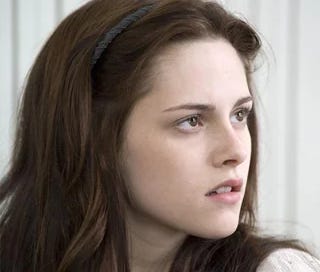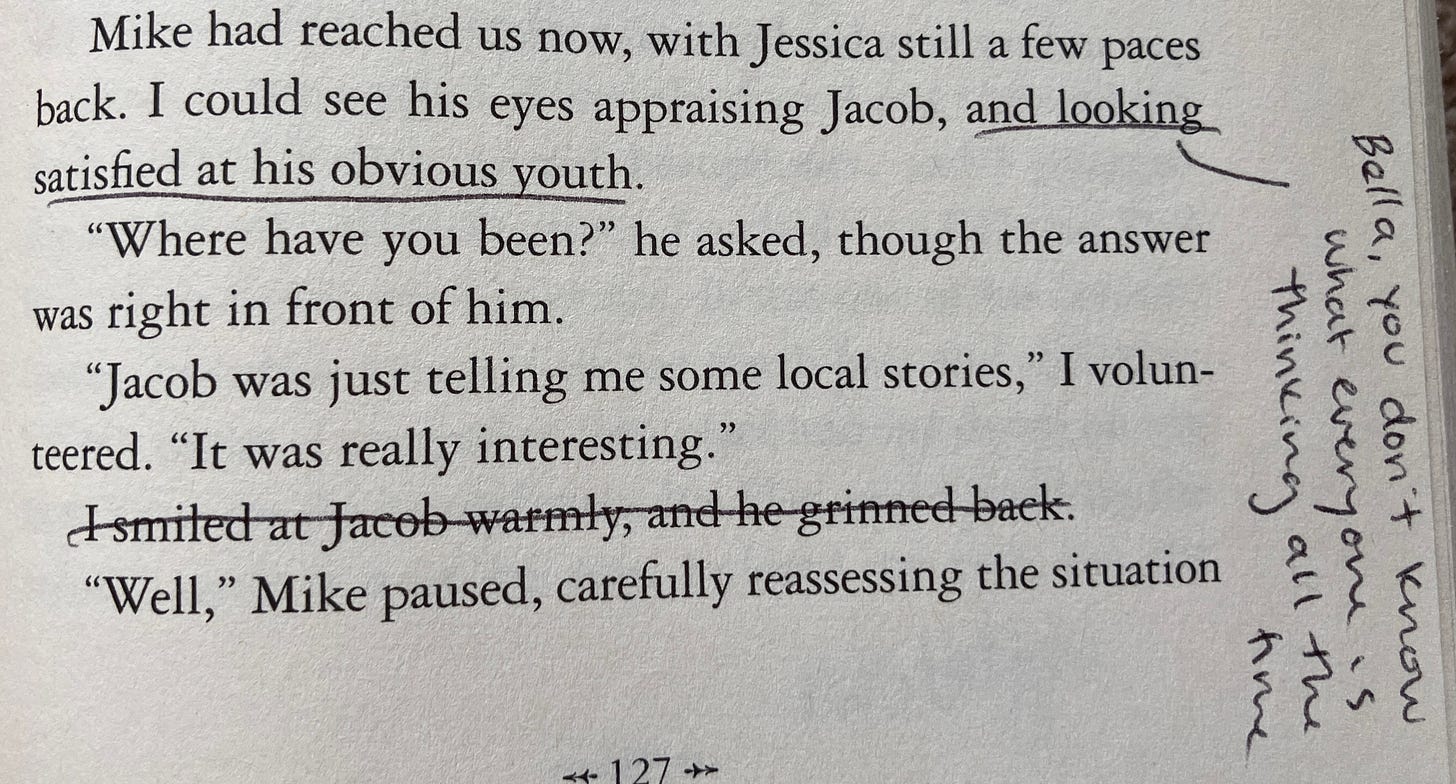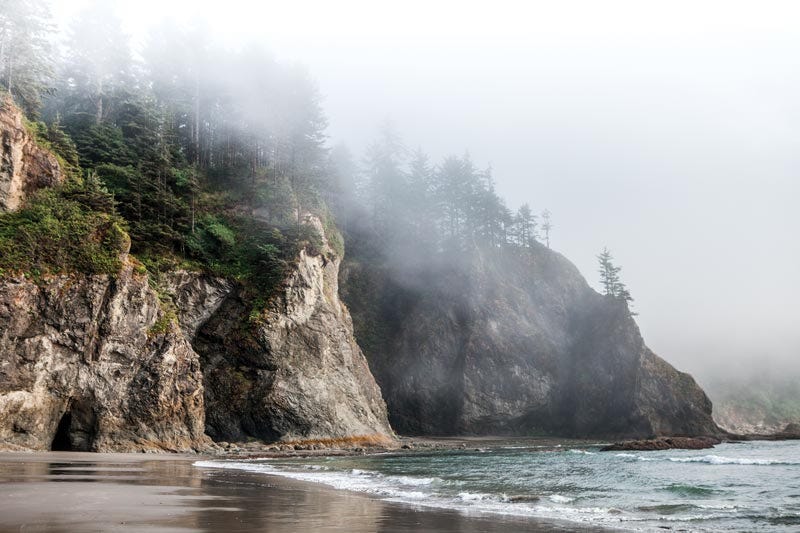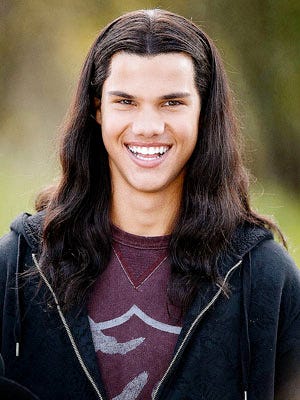I read Twilight so you don't have to // CHAPTER 6: SCARY STORIES
"Her pale, fishy eyes narrowed." Bella flirts (badly), Jacob spills secrets, and the plot inches forward.
A Summary: Bella and her classmates take a day trip to La Push beach, where Bella bumps into Jacob, a chlidhood friend who lives on the reservation. He tells her a spooky tale about the legendary, local inhabitants….
Bella Swan: Mind Reader?
First-person narration can be incredibly effective, if it’s done well. It gives us a story filtered entirely through one character’s perspective, which means we get their thoughts, their opinions, and their limited understanding of the world around them. One of my favorite examples is The Blind Assassin by Margaret Atwood. It masterfully uses perspective and the unreliable narrator (spoiler alert!), as the narrator is intentionally withholding key information until the very end, and it works so well.
In Twilight, Bella is our first-person narrator. And I get why this resonated with so many teenage readers. She’s in the same place emotionally as a lot of young girls, navigating identity, crushes, and social awkwardness. That’s great for YA. My issue is that Stephenie Meyer writes Bella with this near-supernatural hyper-awareness of what everyone around her is thinking all the time, and it’s always about her. There are lines where Bella confidently reports what Mike or Jessica or Lauren are thinking, but… how would she know that? She’s not Edward. She can’t read minds. So why is she constantly telling us what everyone supposedly thinks of her?
It ends up making Bella feel less like a believable character and more like a self-insert who’s painfully aware that she’s the center of the story. Which, fine, she is, but in a good first-person narrative, the character shouldn't act like they know they’re being watched.
Other Observations:
My Thoughts:
Bella and her classmates plan a weekend trip to La Push Beach, but first, we get a quick recap of Bella’s very important Friday. She doesn’t see Edward at school and spends the day sulking about it (what else is new?). Meanwhile, Lauren, who may or may not have been introduced before this point, keeps glaring at Bella with her “pale, fishy eyes” (pg. 121), seething with jealousy.
Is Lauren important? Not particularly. She’s just another character, like Jessica, whose main role is to be jealous that Bella talked to a boy. At this point, it’s hard to care. Let’s just move on, Stephanie.
La Push isn’t like sunny-sandy-get-a-tan type of beach, but just look at it:
Ah! Majestic! Pretty! Sweeping! It’s probably freezing, but I still want to go hike around and explore the tide pools (just as long as I don’t fall in, which, according to Bella, has happened to her more than once in her life [pg. 116]).
The kids wander around the beach, doing vaguely beach-like things. They build a little campfire. Bella goes on a hike. She falls a few times. She checks out the tide pools. Then she goes back to the camp. And then this happens. And then this. And then this.
That’s the problem: there’s no real cause and effect pulling the story forward. It’s a series of events strung together without momentum. Nothing builds, nothing shifts. It just drifts from one beat to the next, like we’re padding time until something actually happens. The writers of South Park have a great talk about this: your story should be structured like This, Therefore/But This, versus, This, And Then This.
Until, finally, a group of teens from the nearby Quileute reservation shows up, and we meet Jacob Black.
Don’t tell me you’ve never heard of Isabella Swan. Isabella Swan!!
But this interaction makes more sense here, because Jacob and Bella’s dads are friends, and they used to play when they were kiddos. Jacob tells her he’s the one who fixed up her truck for her.
The other kids start talking, and one of Jacob’s buddies mention something really odd and made me laugh the first time I read it:
Since Bella is utterly obsessed with the beautiful, mysterious people at her school, she decides to dig for more information about the Cullens and comes up with the brilliant plan to flirt with Jacob (who she notes is “inexperienced around girls”) to get him to spill the tea (pg. 122).
But Bella and Jacob were already having a perfectly pleasant conversation. He was chatting away just fine, no eyelash-batting required. I’m pretty sure she could’ve just, you know, asked.
But no. Bella’s “pitiful” attempts at flirting (her word, not mine) somehow work like a charm. And as I mentioned in a previous post, despite all her humble-bragging and self-deprecation, she is magically good at everything she tries, including manipulation, I guess.
Jacob tells Bella that, according to Quileute legend, his people are descended from werewolves, and werewolves have one natural enemy: the cold ones (aka vampires, we know it’s vampires). Long ago, Jacob’s great-grandfather made a deal with a coven of vampires who agreed to only hunt animals, not people. The agreement? As long as the cold ones stayed off Quileute land, Jacob’s tribe would keep their secret.
And then Jacob drops the bomb: the Cullens? They’re vampires.
Bella doesn’t know whether to take this seriously or not, and has a lot to ponder (and trust me, there’s a lot of pondering in the upcoming chapters).*















